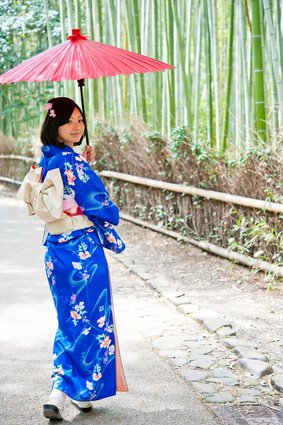
Sometimes people don’t know how to walk when they wear Kimonos for the first time. It’s because their feet are wrapped up completely, so it makes hard to step forward. But no need to worry it’ll be ok and you will find it comfortable as you walk.
Though, hems of Kimono will be rolled up if you stride , so it’s better to walk in small steps than usual.
The front part of the Kimono (Uwamae) will curl up and be seen during days with strong winds or when climbing up or down the stairs. If you are somewhat conscious of “that thing”, then you can lightly press it with your right hand. Due to this, it is better that you do not bring any big luggage in your right hand.
You will tend to forget about the long sleeves when you are not used to wearing it. Please take caution to avoid hooking the sleeves when picking up things. In addition, the belt might be tangled by people or things in narrow areas. This is also a reason that the belt gets dirty for extra care is needed.











